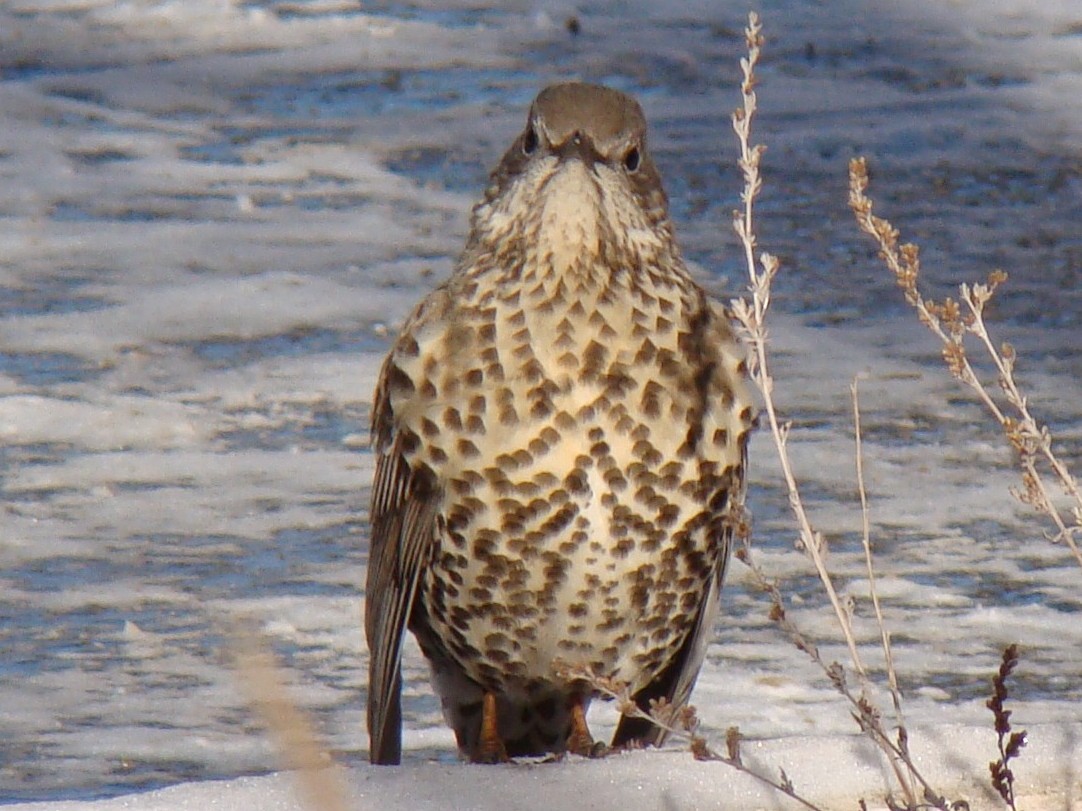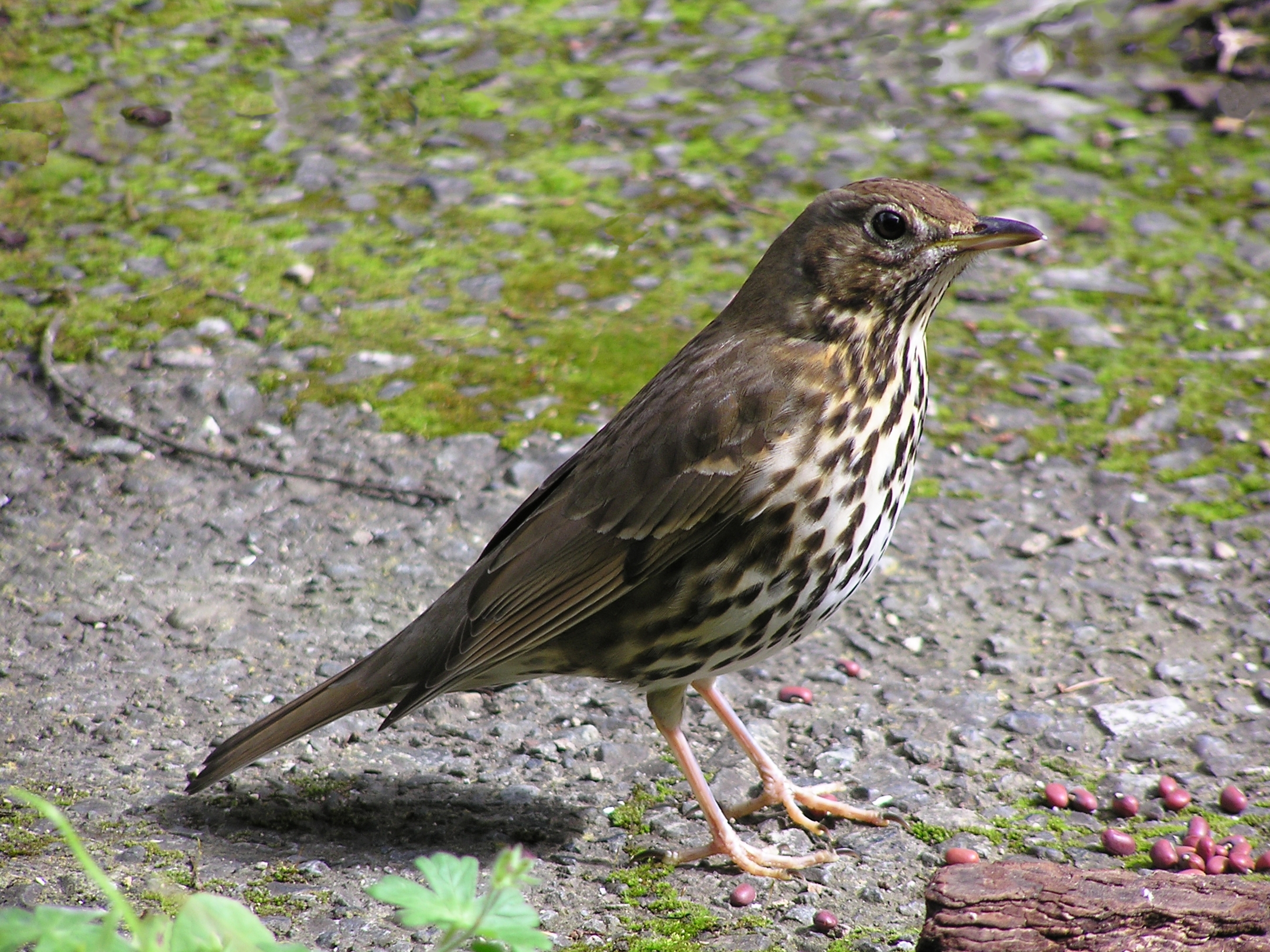|
True Thrush
True thrushes are medium-sized mostly insectivorous or omnivorous birds in the genus ''Turdus'' of the wider thrush family, Turdidae. The genus name ''Turdus'' is Latin for "thrush". The term " thrush" is used for many other birds of the family Turdidae as well as for a number of species belonging to several other families. The genus has a cosmopolitan distribution, with species in the Americas, Europe, Asia, Africa and Australia. Several species have also colonised some oceanic islands, and two species have been introduced to New Zealand. Some New World species are called ''robins'', the most well known of which is the American robin. Several species are migratory. While some species are often split out of ''Turdus'', the two small thrushes formerly separated in ''Platycichla'' by many authors have been restored to the present genus in recent years. Taxonomy and systematics The genus ''Turdus'' was introduced by the Swedish naturalist Carl Linnaeus in 1758 in the tenth edi ... [...More Info...] [...Related Items...] OR: [Wikipedia] [Google] [Baidu] |
Common Blackbird
The common blackbird (''Turdus merula'') is a species of true thrush. It is also called the Eurasian blackbird (especially in North America, to distinguish it from the unrelated New World blackbirds), or simply the blackbird where this does not lead to confusion with a local species. It breeds in Europe, Asiatic Russia, and North Africa, and has been introduced to Australia and New Zealand. It has a number of subspecies across its large range; a few of the Asian subspecies are sometimes considered to be full species. Depending on latitude, the common blackbird may be resident, partially migratory, or fully migratory. The adult male of the common blackbird (''Turdus merula merula'', the nominate subspecies), which is found throughout most of Europe, is all black except for a yellow eye-ring and bill and has a rich, melodious song; the adult female and juvenile have mainly dark brown plumage. This species breeds in woods and gardens, building a neat, cup-shaped nest, bound toge ... [...More Info...] [...Related Items...] OR: [Wikipedia] [Google] [Baidu] |
Species
In biology, a species is the basic unit of classification and a taxonomic rank of an organism, as well as a unit of biodiversity. A species is often defined as the largest group of organisms in which any two individuals of the appropriate sexes or mating types can produce fertile offspring, typically by sexual reproduction. Other ways of defining species include their karyotype, DNA sequence, morphology, behaviour or ecological niche. In addition, paleontologists use the concept of the chronospecies since fossil reproduction cannot be examined. The most recent rigorous estimate for the total number of species of eukaryotes is between 8 and 8.7 million. However, only about 14% of these had been described by 2011. All species (except viruses) are given a two-part name, a "binomial". The first part of a binomial is the genus to which the species belongs. The second part is called the specific name or the specific epithet (in botanical nomenclature, also sometimes i ... [...More Info...] [...Related Items...] OR: [Wikipedia] [Google] [Baidu] |
Mountain Thrush
The mountain thrush (''Turdus plebejus'') is a large thrush which is found in Central America. It was formerly known as the mountain robin. Some authorities refer to it as the American mountain thrush to differentiate it from the Abyssinian thrush (''Turdus abyssinicus''), known in their taxonomy as the African mountain thrush. Description The mountain thrush resembles other ''Turdus'' thrushes in general appearance and habits. It is long and weighs on average. The adult is uniformly dull olive-brown with faint white streaks on the throat. The bill is black and the legs are dark brown. The juvenile resembles the adult, but has buff or orange streaks on the head and upperparts, and dark spotting on the underparts. Two superficially similar relatives share this species range: the sooty thrush is blacker with an orange bill, eye ring and legs, and the clay-colored thrush is much paler and yellow-billed. There are three poorly defined subspecies: * ''T. p. plebejus'' — Cabanis, ... [...More Info...] [...Related Items...] OR: [Wikipedia] [Google] [Baidu] |
São Tomé Thrush
The São Tomé thrush or olivaceous thrush (''Turdus olivaceofuscus'') is a species of bird in the family Turdidae. It is endemic to São Tomé. Until 2010, the related Príncipe thrush (''Turdus xanthorhynchus'') was considered a subspecies, ''Turdus olivaceofuscus xanthorhynchus''. Its natural habitats are subtropical or tropical moist lowland forests and subtropical or tropical moist montane forests. It is threatened by habitat loss Habitat destruction (also termed habitat loss and habitat reduction) is the process by which a natural habitat becomes incapable of supporting its native species. The organisms that previously inhabited the site are displaced or dead, thereby .... References Birds described in 1852 Endemic birds of São Tomé and Príncipe Endemic fauna of São Tomé Island Turdus Taxonomy articles created by Polbot {{Turdidae-stub ... [...More Info...] [...Related Items...] OR: [Wikipedia] [Google] [Baidu] |
Turdus Olivaceofuscus
True thrushes are medium-sized mostly insectivorous or omnivorous birds in the genus ''Turdus'' of the wider thrush family, Turdidae. The genus name ''Turdus'' is Latin for "thrush". The term " thrush" is used for many other birds of the family Turdidae as well as for a number of species belonging to several other families. The genus has a cosmopolitan distribution, with species in the Americas, Europe, Asia, Africa and Australia. Several species have also colonised some oceanic islands, and two species have been introduced to New Zealand. Some New World species are called ''robins'', the most well known of which is the American robin. Several species are migratory. While some species are often split out of ''Turdus'', the two small thrushes formerly separated in '' Platycichla'' by many authors have been restored to the present genus in recent years. Taxonomy and systematics The genus ''Turdus'' was introduced by the Swedish naturalist Carl Linnaeus in 1758 in the tenth ed ... [...More Info...] [...Related Items...] OR: [Wikipedia] [Google] [Baidu] |
Príncipe Thrush
The Príncipe thrush (''Turdus xanthorhynchus'') is a species of bird in the family Turdidae. It is endemic to Príncipe. It was formerly considered a subspecies of the São Tomé thrush, with some taxonomists still considering it so. Its natural habitats are subtropical or tropical moist lowland forests and subtropical or tropical moist montane forests. It is critically threatened by habitat loss. References Turdus Endemic birds of São Tomé and Príncipe Critically endangered fauna of Africa Birds described in 1901 {{Turdidae-stub ... [...More Info...] [...Related Items...] OR: [Wikipedia] [Google] [Baidu] |
African Thrush
The African thrush or West African thrush (''Turdus pelios'') is a passerine bird in the thrush family Turdidae. It is common in well-wooded areas over much of the western part of sub-Saharan Africa, it was once considered to be conspecific with the olive thrush but that species has now been split further. Populations are resident (non- migratory). Description The African Thrush has dark olive-grey upperparts. The underparts show a whitish evenly brown- streaked side throat, the breast is greyish brown and the flanks are pale buff-orange with this colour not extending on to the lower breast, the belly and vent are white. It has a yellow-orange bill. It weighs and measures in length. Voice The song of the African thrush is a sustained, clear warbling made up of different phrases repeated rather randomly in a sequence. Also a high-pitched squealing flight call. Distribution The African thrush is distributed from Senegal and Gambia in the west to South Sudan, Ethiopia and Eritr ... [...More Info...] [...Related Items...] OR: [Wikipedia] [Google] [Baidu] |
Mistle Thrush
The mistle thrush (''Turdus viscivorus'') is a bird common to much of Europe, temperate Asia and North Africa. It is a year-round resident in a large part of its range, but northern and eastern populations migrate south for the winter, often in small flocks. It is a large thrush with pale grey-brown upper parts, a greyish-white chin and throat, and black spots on its pale yellow and off-white under parts. The sexes are similar in plumage, and its three subspecies show only minimal differences. The male has a loud, far-carrying song which is delivered even in wet and windy weather, earning the bird the old name of stormcock. Found in open woods, parks, hedges and cultivated land, the mistle thrush feeds on a wide variety of invertebrates, seeds and berries. Its preferred fruits include those of the mistletoe, holly and yew. Mistletoe is favoured where it is available, and this is reflected in the thrush's English and scientific names; the plant, a parasitic species, benefits ... [...More Info...] [...Related Items...] OR: [Wikipedia] [Google] [Baidu] |
Turdus Viscivorus In Baikonur-town 001
True thrushes are medium-sized mostly insectivorous or omnivorous birds in the genus ''Turdus'' of the wider thrush family, Turdidae. The genus name ''Turdus'' is Latin for "thrush". The term " thrush" is used for many other birds of the family Turdidae as well as for a number of species belonging to several other families. The genus has a cosmopolitan distribution, with species in the Americas, Europe, Asia, Africa and Australia. Several species have also colonised some oceanic islands, and two species have been introduced to New Zealand. Some New World species are called ''robins'', the most well known of which is the American robin. Several species are migratory. While some species are often split out of ''Turdus'', the two small thrushes formerly separated in ''Platycichla'' by many authors have been restored to the present genus in recent years. Taxonomy and systematics The genus ''Turdus'' was introduced by the Swedish naturalist Carl Linnaeus in 1758 in the tenth editi ... [...More Info...] [...Related Items...] OR: [Wikipedia] [Google] [Baidu] |
Song Thrush
The song thrush (''Turdus philomelos'') is a Thrush (bird), thrush that breeds across the West Palearctic. It has brown upper-parts and black-spotted cream or buff underparts and has three recognised subspecies. Its distinctive Birdsong, song, which has repeated musical phrases, has frequently been referred to in poetry. The song thrush breeds in forests, gardens and parks, and is partially bird migration, migratory with many birds wintering in southern Europe, North Africa and the Middle East; it has also been introduced into New Zealand and Australia. Although it is not threatened globally, there have been serious population declines in parts of Europe, possibly due to changes in farming practices. The song thrush builds a neat mud-lined bird nest#Cup, cup nest in a bush or tree and lays four to five dark-spotted blue bird egg, eggs. It is omnivorous and has the habit of using a favourite stone as an "anvil" on which to break open the shells of land snail, snails. Like other ... [...More Info...] [...Related Items...] OR: [Wikipedia] [Google] [Baidu] |
Chinese Thrush
The Chinese thrush (''Turdus mupinensis'') is a species of bird in the family Turdidae. It is found in China and far northern Vietnam. Its natural habitats are temperate forests and subtropical or tropical moist montane forest Montane ecosystems are found on the slopes of mountains. The alpine climate in these regions strongly affects the ecosystem because temperatures fall as elevation increases, causing the ecosystem to stratify. This stratification is a crucial ...s. A recent molecular study places the Chinese thrush's closest relatives as the similarly plumaged European species, the song thrush (''T. philomelos'') and the mistle thrush (''T. viscivorus''), all three species early offshoots from the main ''Turdus'' radiation around the world. References External links BirdLife Especies, ficha técnica.(en inglés) Chinese thrush Chinese thrush Birds of China Chinese thrush Taxonomy articles created by Polbot Taxobox binomials not recognized by IUCN [Baidu] |

_female.jpg)


.jpg)


.jpg)